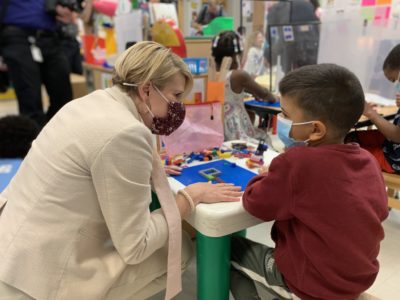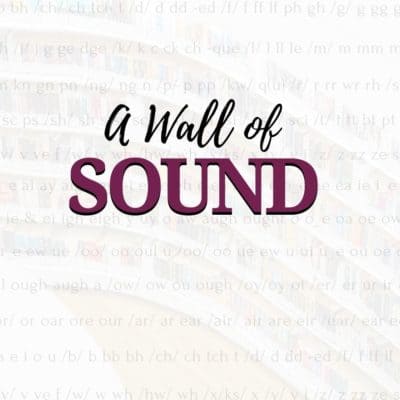
|
|
Teachers will use a familiar reading assessment tool in elementary schools across North Carolina this year, but they’ll notice some changes.
About three years ago, the Department of Public Instruction (DPI) initiated a shift from the long-used mCLASS assessment tool to Istation. Assessments such as mCLASS and Istation are diagnostic tools that teachers use to measure students’ reading progress.
Amplify, the maker of mCLASS, challenged the shift, objecting to the procurement process.
Last year, a state agency suspended the Istation contract, and DPI later canceled it. Districts then had a choice from a list of five vendors for reading assessments. Some teachers said they worried that Istation included too much screen time for kids, and they had questions about the reliability of data it collected. But teachers expressed concerns about mCLASS, too. Some worried that it consumed too much of their instruction time; others said it didn’t align with a research-based approach to reading instruction — the science of reading.
DPI convened a committee to identify a statewide vendor for this school year. It negotiated a package that would address complaints and align the assessment with North Carolina’s new “science of reading” law. The result was a three-year, $14.5 million contract with Amplify to bring mCLASS back — with some improvements.
School districts will receive training in the new version of mCLASS before the school year begins. Meanwhile, Amplify has created a web page detailing what mCLASS will look like, including a link to FAQs it created with DPI.
“I feel super optimistic right now about where North Carolina is in terms of its journey with the science of reading, in terms of really bringing along the teacher community and bringing along the whole state in a cohesive way,” said David Stevenson, a senior fellow and former senior vice president at Amplify.
No more cueing or leveled readers in assessment
In the past, mCLASS assessments in North Carolina had two components. One was a DIBELS component — Dynamic Indicators of Basic Early Literacy Skills — that assessed children’s proficiency in such things as decoding and fluency. The other was a TRC component — Text Reading Comprehension — that asked kids to read passages to test comprehension.
The TRC component included cueing exercises, and after a student completed it the assessment would assign the student a reading letter level. The student would then look for books in the classroom with that letter level on the cover.
These functions reflect a balanced literacy, or whole language, approach to reading instruction. It’s an approach the state is moving away from in an effort to align instruction with scientific reading research consensus.
Amplify officials said the TRC component had existed because previous DPI administrations listed its functionalities in their “requests for proposal.” As a company bidding on public contracts, Amplify would offer solutions that responded to the state’s list of requirements.
“Ten years ago, 15 years ago, balanced literacy and letter levels were the predominant framework of thinking about literacy performance and progress,” Stevenson said. “North Carolina and the whole country are in the midst of a cultural shift right now, and we’re excited to be part of that.”
Starting this year, teachers in the state will use only the DIBELS component. It’s an updated version called DIBELS 8th Edition, which researchers at the University of Oregon helped to develop.
“That’s one of the things that the team said we needed because of where we’re headed as a state,” said Amy Rhyne, director of DPI’s Office of Early Learning. “We have to make sure this platform aligns with how we are instructing our children. It’s unfair to assess them differently from what you’re teaching.”
Protecting teacher time
Rhyne served as principal, assistant principal, and teacher in several districts before joining DPI. She said she remembers using mCLASS in her schools. She also remembers how the assessment could take up a lot of class time and drive instructional practices.
“We realize that there will be moments that you’re going to have to stop to do an assessment,” said Rhyne, who emphasized the value of the data collected. “But the goal is not to have that take over all of your instruction.”
DIBELS 8 requires less assessment time, Amplify says. It ranges from 7-9 minutes per student for kindergartners and first-graders, and 5-7 minutes for second and third graders. Amplify officials said this is a decrease of two to 10 minutes per student for first and second graders from previous versions, and cuts nine to 15 minutes for third graders. Removing the TRC should save teachers another 10-15 minutes per student.
While reducing the assessment time, DIBELS 8 maintains some of its features that teachers have appreciated. For example, most of the DIBELS 8 assessment is one-on-one, with teachers administering the assessment and observing student responses. Rather than ask students, for example, to click on a word that starts with a certain sound, the assessment asks students to produce sounds and asks teachers to record the responses.
This not only reduces screen time for the students, Stevenson said, but it gives teachers more confidence in the assessment. Rather than looking at how a student did taking the assessment on a device while a proctor supervised, teachers are present and involved.
Growth monitoring, suggested activities and MTSS supports
The state requires three assessments — at the beginning, middle, and end of the grade. Stevenson said DIBELS 8 allows teachers to plan interventions based on any of these assessments and also conduct short progress-monitoring assessments to test whether those interventions are working. Teachers can use this as part of their multi-tiered system of support — to provide targeted support for learners.
As teachers monitor progress, the software also provides a normative slope that shows average growth over the course of the year for students starting at various proficiency levels in various domains of reading instruction.
The activities the assessment suggests are not replacements for curriculum, Stevenson said. They align with the science of reading, and he said they will be useful aids — especially in districts waiting for training in the science of reading.
“To say here are 10 activities that are right in the sweet spot for that child, that are about phonemic awareness, that’s a nice starting point for [these teachers],” he said.
Rhyne said she thinks teachers are going to be excited to see what mCLASS will look like this year. Her office has received a number of questions since the mCLASS announcement, and she said she finds that encouraging.
“They’ve asked these questions because they do want this to be aligned [with the science of reading], and they don’t want it to feel separate,” Rhyne said. “So that’s great. I mean, that tells us that our entire culture is shifting to exactly where we’re hoping to head. It’s one page, one direction.”





